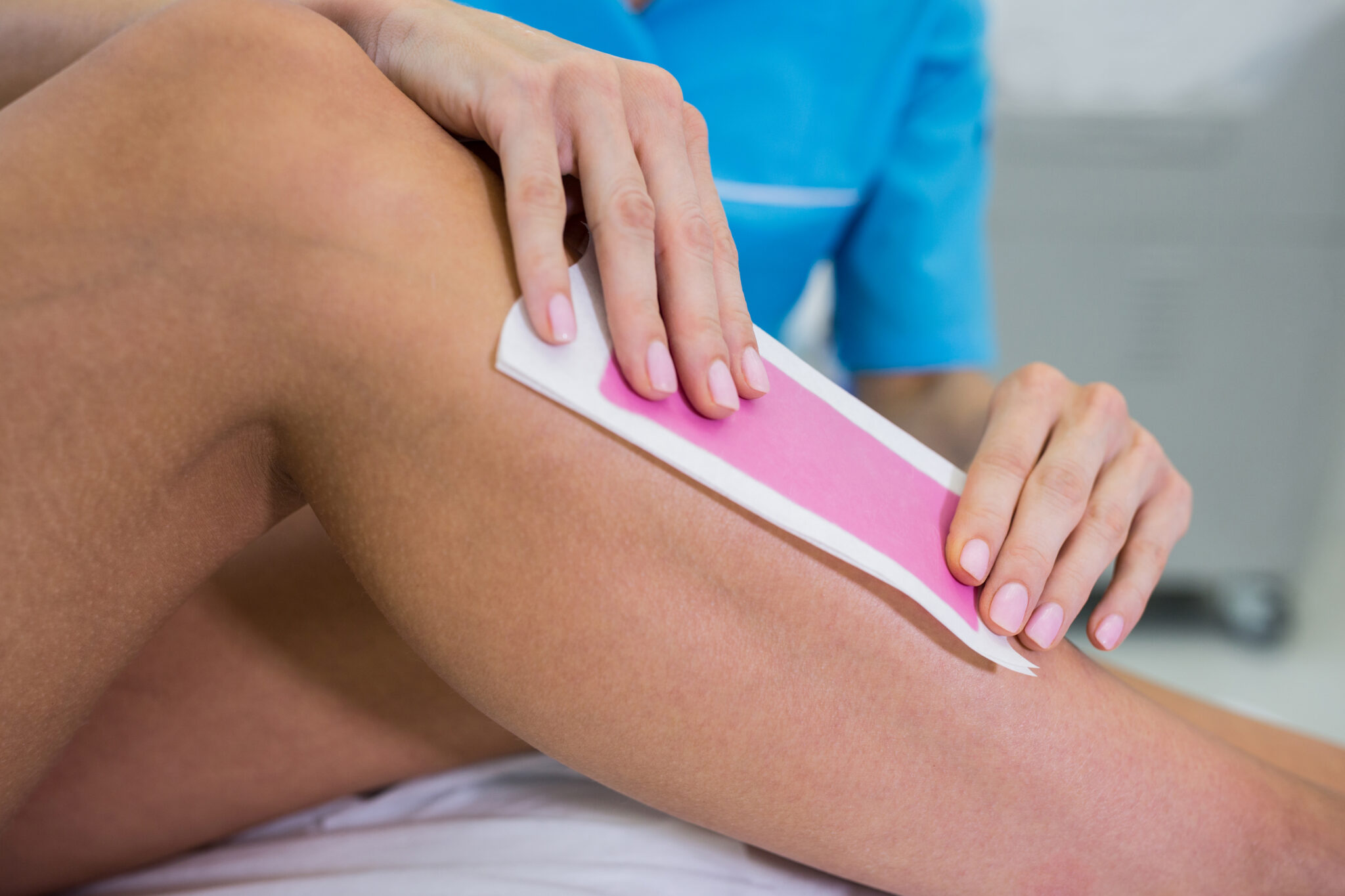
Waxing is the most popular solution for many people when it comes to getting rid of unwanted body hair. However, if you’re a beginner, deciding between all of the many types of wax might be confusing.
“Which wax should be used on which body area?”
“What kind of wax is best for my skin?”
“How much does all of this cost?”
Feeling overwhelmed? Don’t sweat it! We’ve broken down all of the different types of body wax depending on your specific needs, so you can pick the one that’s ideal for you!
6 Types of Waxing Methods for Hair Removal
1. Soft Wax
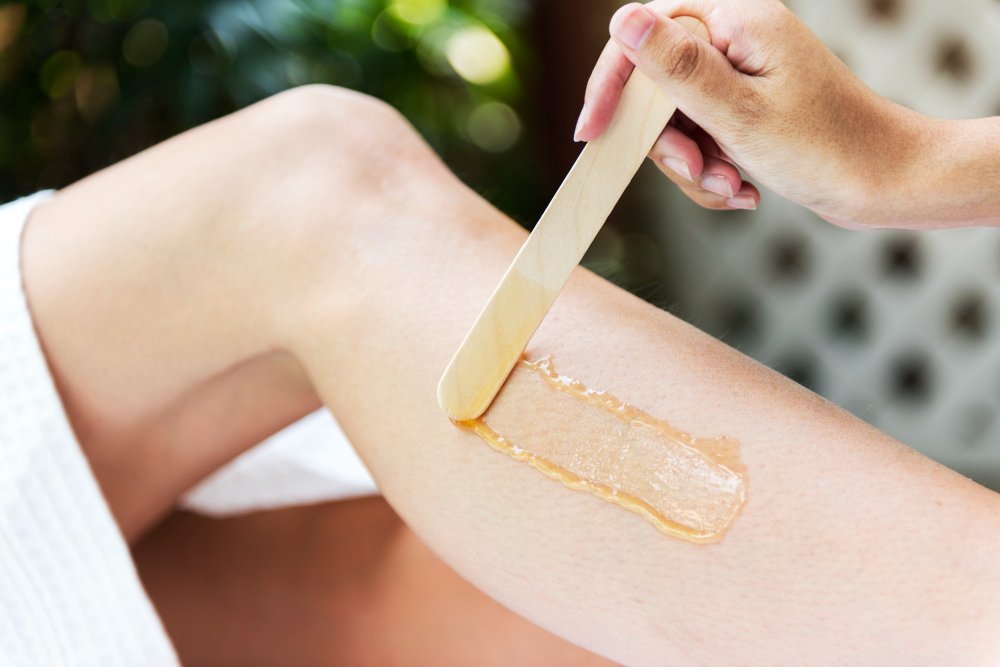
This type of wax is applied thinly and removed using cloth or paper strips. It adheres to the hair, making it suitable for larger areas like legs and arms. It’s effective in pulling out finer hairs. While it is effective for larger areas due to its ease of application, it may not be the best choice for those with sensitive skin prone to irritation.
Best for Body Areas Like: Legs, arms, back, and larger areas of the body.
Advantages of Soft Wax:
- Adherence: This type adheres well to the skin, effectively gripping fine hairs for removal.
- Cost-Effectiveness: Generally more affordable than hard wax alternatives, making it a popular choice.
- Ease of Application: Its pliable nature allows for easy spreading over larger areas, speeding up the process.
Disadvantages of Soft Wax
- Potential Irritation: It may cause redness or irritation, particularly for those with sensitive skin.
- Messy Cleanup: Requires cloth strips for removal, which can be messy and less convenient.
2. Hard Wax
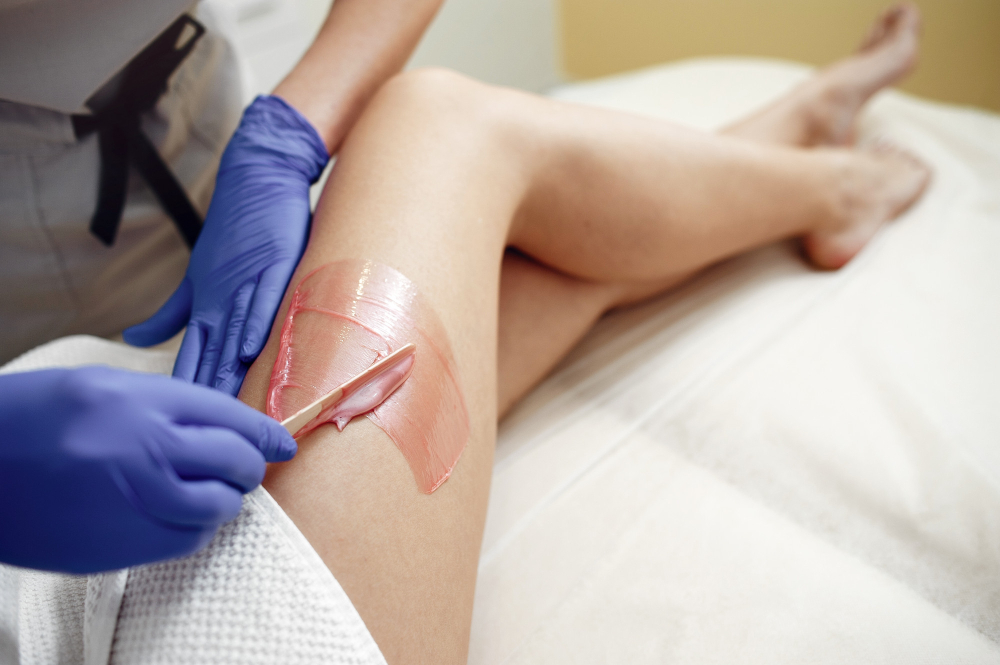
This type of wax doesn’t require strips for hair removal. Once applied, it hardens and is peeled off directly from the skin. The main benefits of hard waxing are that it’s less painful than soft wax and is ideal for sensitive areas as it grips hair rather than skin.
Best for Body Areas Like: Face, underarms, bikini area, and sensitive skin regions.
Advantages of Hard Wax
- Less Irritation: It adheres primarily to the hair, minimizing direct contact with the skin and reducing irritation for sensitive areas.
- Precision: Its ability to be applied in multiple layers allows for a better grip on shorter hairs, providing a more thorough removal.
- Reduced Discomfort: Users often report experiencing less discomfort or pain compared to soft wax.
Disadvantages of Hard Wax
- Skill Requirement: Requires practice and skill for proper application and removal.
- Higher Cost: Typically more expensive than soft wax options due to its specialized formulation.
3. Pre-Made Wax Strips
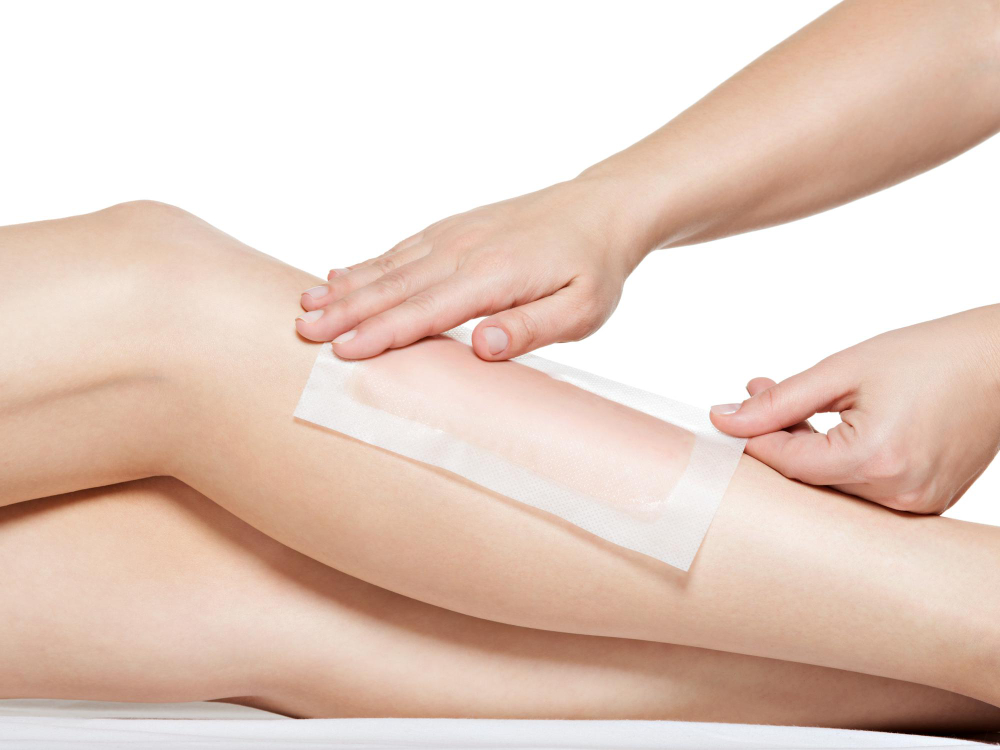
These are pre-coated strips that come ready to use. They’re convenient for quick touch-ups and travel. They usually contain soft wax and are suitable for small areas or on-the-go use. Pre-made wax strips offer convenience but might not be as effective for thorough hair removal or larger surface areas compared to traditional waxing methods.
Best for Body Areas Like:
Face, arms, legs, and touch-up areas.
Advantages of Pre-Made Wax Strips
- Convenience: Ready-to-use strips are convenient and quick for touch-ups or smaller areas.
- Portability: Ideal for travel and on-the-go hair removal needs.
Disadvantages of Pre-Made Wax Strips
- Limited Coverage: Might not be suitable for larger body areas.
- Effectiveness on Short Hairs: Strips may not effectively remove shorter or finer hairs.
4. Chocolate Wax
A variation of wax that includes cocoa and glycerin. It’s known for its skin-nourishing properties and pleasant chocolate scent. The main benefit of chocolate waxing is that it is gentle on the skin and suitable for sensitive areas and its moisturising properties can be beneficial for those with dry skin.
Best for Body Areas Like:
Legs, arms, and back.
Advantages of Chocolate Wax
- Moisturising Properties: Infused with cocoa, it can help hydrate and nourish the skin during the waxing process.
- Pleasant Fragrance: Offers a mild and pleasant aroma compared to traditional waxes, making the experience more enjoyable.
Disadvantages of Chocolate Wax
- Residue: May leave behind a sticky residue that requires thorough cleaning after use.
- Potential Allergies: Some individuals might experience allergic reactions due to sensitivity to the ingredients.
6. Fruit Wax
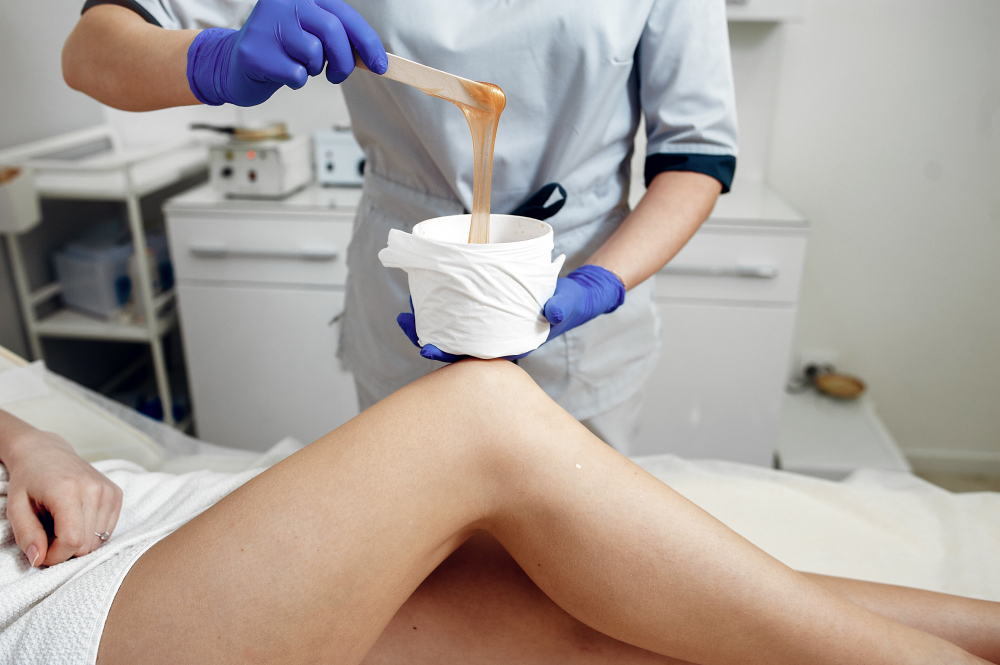
This type of wax for hair removal is infused with fruit extracts like berries or citrus. Fruit enzymes in the wax help exfoliate the skin while removing hair. It’s often used for its natural and skin-friendly properties. Fruit wax’s natural ingredients can appeal to those seeking a more organic option, but its efficacy may vary depending on hair texture and density.
Best for Body Areas Like: Legs, arms, and underarms.
Advantages of Fruit Wax
- Natural Ingredients: Often derived from fruit extracts, perceived as a more natural alternative.
- Gentle on Skin: Can be less abrasive, making it suitable for individuals with sensitive skin.
Disadvantages of Fruit Wax
- Residue Concerns: Similar to other natural waxes, it might leave sticky residue post-use.
- Effectiveness on Coarser Hair: May not effectively remove coarse or thick hair.
6. Sugar Wax
Made from sugar, lemon juice, and water, this wax is applied at room temperature and removed with a cloth strip. It’s gentle on the skin and can be less painful compared to other waxing methods. The ingredients are natural and hypoallergenic.
Best for Body Areas Like: Legs, arms, and facial hair.
Advantages of Sugar Wax
- Natural and Safe: Comprising sugar, water, and lemon, it’s perceived as a safer option for sensitive skin.
- Reduced Pain: Often reported to be less painful compared to traditional waxes.
Disadvantages of Sugar Wax
Sticky Consistency: Requires mastery of application and removal techniques for optimal results.
Specific Technique: Its unique consistency demands practice for effective use.
How Much Does Waxing Cost?
Waxing treatments at Bodycraft can give you smooth, hair-free skin. Our consultants will assist you in choosing the best body hair removal treatment and wax for your skin type. Choices include regular honey wax, chocolate wax, peel-off wax, gold wax, or our more premium Perron Rigot wax.
Our prices:
- Full Arms – Rs. 350 onwards.
- Underarms – Rs. 200 onwards.
- Full Legs – Rs. 500 onwards.
- Upper Lip Wax – Rs. 110 onwards.
Check out more exciting prices and offers for full body waxing, Brazilian waxing, bikini waxing and our exclusive honey wax offer starting at Rs. 899, here on our website!
Takeaway
Waxing might appear to be a terrifying method due to the popular notion that it is painful. Although there will be some discomfort at first, your hair will thin down with time, making future waxing sessions much more bearable.
If you’re looking for a pain-free waxing treatment, visit your nearest Bodycraft salon and get smooth, silky skin with our professional service! Book an appointment now!
FAQs Related to Types of Waxing
1. Which wax is best for the face?
The best wax for the face depends on your skin type and sensitivity. Generally, hard wax is preferred for facial hair as it adheres to the hair and not the skin, making it less harsh on sensitive areas like the face. Beeswax-based or hypoallergenic waxes are often recommended for facial waxing due to their gentle nature.
2. Which wax is best for sensitive skin?
For sensitive skin, it’s advisable to opt for waxes specifically formulated for sensitive skin types. Look for waxes containing ingredients like chamomile, aloe vera, or azulene, as these have soothing properties that can help minimise irritation.
3. What is a Brazilian wax?
A Brazilian wax involves the removal of most or all pubic hair using wax. It typically removes hair from the bikini area, including the front, back, and everything in between, leaving the skin smooth. It’s a popular choice for those seeking a hair-free look in an intimate area.
4. Does face waxing loosen skin?
Face waxing, when done correctly, shouldn’t inherently loosen the skin. However, frequent or improper waxing can lead to temporary redness and irritation, or in some cases, it might contribute to sagging over time. Using quality products and techniques, along with proper aftercare, can minimize any potential adverse effects.
5. Is waxing or shaving better?
Both waxing and shaving have their pros and cons. Waxing removes hair from the root, so the results last longer (typically 3-6 weeks), and the hair tends to grow back finer. However, it can be more painful and might cause irritation for sensitive skin. Shaving is quicker and painless (usually), but hair grows back faster, and there’s a chance of ingrown hairs. The choice between waxing and shaving often comes down to personal preference, pain tolerance, and desired results. Explore the differences and find what suits you best in waxing vs shaving.
